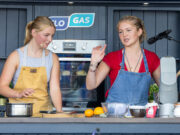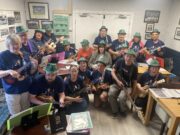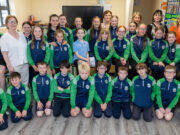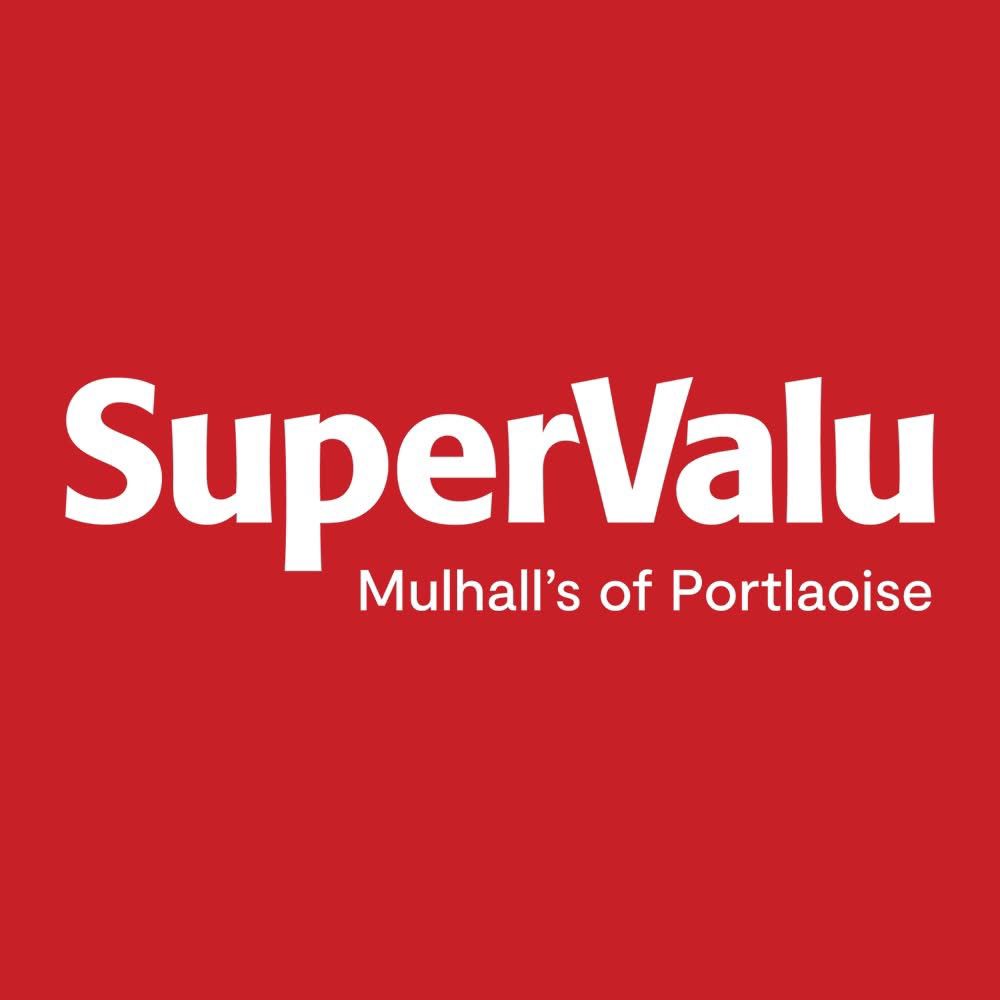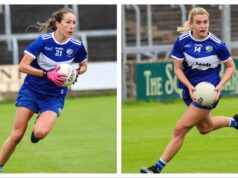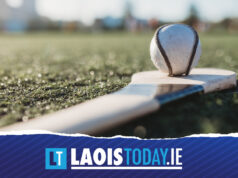So here we are. Election Eve.
Those with a passing interest say that elections are like the championship for political folk. As decent and all an analogy that is, it’s actually even bigger again. In a sporting world, the championship occurs every year. Local Elections happen every five years.
This, so, is more like the World Cup, Euros, Olympics or Lions tour. And they even only happen every four years.
After weeks of postering and posturing and essentially a five-year countdown since the last time, the country goes to the polls tomorrow, Friday, June 7, to vote in the European and Local Elections.
Approximately 66,000 people are entitled to vote in Laois.
Here we go through some of the issues that are relevant in Laois – and explain where the battlefields are across the county.
Over the coming days, a myriad of further talking points will emerge, but for now we focus on some of the main ones ahead of polling day.
The vote
Voting takes place from 7am to 10pm on Friday at 48 polling stations across the county. Within that, some polling stations will have more than one ballot box which voters will be assigned to depending on where they live. Smaller areas like Vicarstown, Errill and Clonaghadoo will have just one box. Places like Timahoe, Emo and Ballyroan have two.
There are three in Stradbally, five in Graiguecullen, nine in Portarlington and Mountmellick and 29 in Portlaoise across polling stations in the Holy Family and Scoil Bhride primary schools.
The number of seats and the different areas
There are 19 seats on Laois County Council – across three Municipal Districts: Portlaoise, Borris-in-Ossory/Mountmellick and Graiguecullen-Portarlington.
The Portlaoise district, which also includes Abbeyleix, Ballyroan, Ballinakill, Spink, Shanahoe and Raheen, has seven seats available. There are six seats up for grabs in the Graiguecullen-Portarlington and Borris-in-Ossory/Mountmellick districts.
Councillors and candidates
Rather unusually, all 19 outgoing councillors are contesting to be re-elected. In addition, there are 28 candidates looking to be elected for the first time.
In Portlaoise there are 20 candidates for the seven seats; there are 15 candidates in Borris-Mountmellick and 12 in Graigue-Port. The 47 candidates running on this occasion compares to just 39 in 2019.
But just because all 19 councillors are contesting, doesn’t mean that all 19 were elected the last time out in 2019.
Three of the councillors elected on that occasion stepped down during the five-year term. And in each instance there was somebody co-opted (chosen by the party) to take their place. Tom Mulhall (Fine Gael) was replaced by PJ Kelly in Graiguecullen-Portarlington while in the Portlaoise area Barry Walsh (Fine Gael) replaced Mary Sweeney and Marie Tuohy (Labour) replaced her husband Noel.
So while they have all served a couple of years each as a councillor, they are seeking to be elected in their own right.
Across the districts, then, there is no natural opening. If a new candidate is to be elected, they are going to have to unseat a sitting councillor.
The current state of play for the parties
The last term of Laois County Council was split like so: Fine Gael (6) Fianna Fáil (6), Independents (4), Sinn Féin (2) and Labour (1),
Fine Gael initially had seven seats but Aisling Moran, who was elected for the party in the Graiguecullen-Portarlington Municipal District, left to become an Independent.
Fine Gael and Fianna Fáil have never had fewer representatives in the council, though that fact is tempered somewhat by the fact that since 2014 there are only 19 councillors – prior to that there were 25.
Fianna Fáil are running more candidates than any other party with 11, Fine Gael have eight and Sinn Féin have seven, though that is a record number for them.
Labour have three candidates, as do the Greens who are seeking a first ever seat in Laois while the new Independent Ireland party have two candidates and Aontú are running a candidate in Laois for the first time. There are 12 Independent candidates, again a record number in Laois.
Social Democrats and People Before Profit don’t have any candidates in Laois, nor do any of the new right wing parties like the National Party, Ireland First or the Irish Freedom Party.
Borris-in-Ossory/Mountmellick
There are six seats available in this district which, geographically, is about half the county or the ‘hurling side’ to return to the sporting parlance.
It stretches from Clonaslee on the Offaly border to Cullohill on the Kilkenny-Tipperary border and almost as far as Roscrea. Mountmellick is the main urban area followed by the likes of Mountrath, Rathdowney and Durrow and it also includes Rosenallis, Camross, Ballyfin, Borris-in-Ossory, Ballacolla and Errill.
Like all areas, the first thing to consider is geography. In the last term, there were councillors in Rosenallis (Seamus McDonald, Fianna Fáil), Mountmellick (Paddy Bracken, Fianna Fáil), Mountrath (James Kelly, Independent), Borris-in-Ossory (Conor Bergin, Fine Gael), Rathdowney (John King, Fine Gael) and Durrow (Ollie Clooney, Independent).
Two of the councillors were on the northern side in Paddy Bracken and Seamus McDonald with four on the other side – James Kelly, Conor Bergin, John King and Ollie Clooney.
If a change is to occur, it would be difficult to see only one returned on the Mountmellick-Rosenallis-Clonaslee side. It’s likely to either remain as it is geography-wise or else return to a 3-3 equal split as it was from 2014-2019.
In terms of the new candidates, Paddy Buggy (Fine Gael) in Mountmellick, Declan Good (Fianna Fáil) in Clonaslee and Lorna Holohan-Garry (Sinn Féin), who is from Mountmellick but living in Clonaslee, are on that northern side.
Helen Campion (Sinn Féin) and Brian Phelan (Fianna Fáil) are both in Rathdowney, ensuring a relatively packed field there while Labour’s Brian Corrigan is in Ballacolla. Kevin
Fintan Cuddy (Fianna Fáil) is in Castletown, Kevin Drennan (Independent) is in Camross and Fiona Dunne (Green Party) is in Abbeyleix, though running in this area.
On the last occasion, there was also an equal split of two Fine Gael, two Fianna Fáil and two Independent.
Graiguecullen-Portarlington
There are 12 candidates running for six seats here, with the outgoing councillors all in contention though there is a change from what was elected five years ago.
The biggest change is that Tom Mulhall, who was elected on the first count five years, has sadly passed away. He had resigned his seat in 2021 due to illness. His place on the council was taken by PJ Kelly from Ballybrittas who runs in his own right on this occasion.
The other change is that Aisling Moran, then a first-time candidate winning a seat held by her father John for the previous 28 years, is now an Independent having opted to leave Fine Gael.
Those two changes are likely to connected. Can PJ Kelly win enough of the support that Tom Mulhall won? And how will leaving Fine Gael effect Aisling Moran? Will she lose Fine Gael support she got on that occasion? And if she does, can she make up for it with Independent support?
Geographically, in between them is Vivienne Phelan, the Stradbally candidate that is looking to build on her showing five years ago.
Again, across the area, geography is hugely important. Currently there are three councillors in the old ‘Emo’ part of the district (from Portarlington to Stradbally) – Aidan Mullins (Sinn Féin), PJ Kelly (Fine Gael) and Paschal McEvoy (Fianna Fáil).
There are also three candidates in the old Luggacurren area – Timahoe plus the other side of the Windy Gap. Padraig Fleming (Fianna Fáil) and Independents Ben Brennan and Aisling Moran.
Breaking up that equal 3-3 split will be difficult given most votes remain local to a voter’s home. Additionally, as it stands there are two Independents, two from Fianna Fáil and two from Fine Gael.
Joey Kennedy (Fianna Fáil) from Portarlington and Charlie Hackett (Green Party) from Geashill are on the old Emo side while Eoin Barry (Labour) from Wolfhill but living in Killeshin, Aaron Kelly (Sinn Féin) from Graiguecullen and Patsy Fennell (Independent Ireland) are on the old Luggacurren area and seeking a breakthrough.
Portlaoise
From what we can see, only Cabra-Glasnevin in Dublin, with 21, can claim to have more candidates running than Portlaoise – which has 20.
Fine Gael (3), Fianna Fáil (2), Sinn Féin (1) and Labour (1) was the composition of the Portlaoise Municipal District on the last occasion.
There are seven seats up for grabs and it’s likely to be another marathon count. Again, all seven outgoing councillors are contesting – though Barry Walsh (Fine Gael) and Marie Tuohy (Labour) are running for the first time having been co-opted midway through the last term.
The other outgoing councillors are Caroline Dwane-Stanley (Sinn Féin), Willie Aird and Thomasina Connell (Fine Gael) and John Joe Fennelly and Catherine Fitzgerald (Fianna Fáil).
Though called Portlaoise, it’s an area that also takes in Abbeyleix, Ballyroan, The Rock, Ballinakill, Raheen, Spink and Shanahoe. Five of the outgoing councillors were Portlaoise based with Barry Walsh in Ballyroan and John Joe Fennelly in Abbeyleix.
The Ballyroan-Abbeyleix area will be keen to maintain that 5-2 split; the many Portlaoise candidates will be hoping to bring an extra one back to Portlaoise.
Of the new candidates, Rosie Palmer (Green Party) is from Ballinakill and lives in Abbeyleix, Jason Phelan (Sinn Fein) and Noel Burke (Independent) are in Abbeyleix while Colette Byrne (Independent Ireland) is in Ballinakill. The number of candidates as a whole is higher than ever – and that’s the case in the non-Portlaoise part of the district too.
Many of the candidates in Portlaoise are running for a second time – though their status has changed. Naeem Iqbal was an Independent five years ago, now he’s with Fianna Fáil.
Conversely, Donal Kelly and Pauline Flanagan (then Madigan) ran for Fianna Fáil in 2019 but are now Independent. Dom Dunne was with Renua the last time. Now he’s Independent.
Sinn Féin have a second candidate in Portlaoise in Maria McCormack though she went to school in Ballyroan so will be hoping that double connection will help her. Aontú have a candidate in Martha Ryan while Tommy Mulligan, Bolaji Adeyanju and John Cowhig are also Independents.
The count
Sorting of the votes will begin in the Scoil Chríost Rí sports hall in Portlaoise on Saturday morning at 9am. This is where the European and Local Election votes will be separated.
Candidates and parties will tally the figures here – an unofficial count where they look at the votes, box-by-box. By the afternoon we should have a final tally of first preference votes which isn’t 100% accurate but is rarely too far off either.
The European votes will be transferred to Westport in Castlebar where the count for the Midlands North West constituency is being held.
The Local votes will be then moved to the old Gings warehouse in Kealew Business Park in Portlaoise where the count will officially get underway. Returning Officer Donal Brennan has informed candidates that he is unlikely to receive the votes until about 6pm. It is likely that counting will continue until 11 or 12pm and be adjourned until Sunday morning.
It is quite possible that the count will run until Monday or Tuesday.
Keeping up to date with the action
LaoisToday will have a team of reporters and photographers on duty all over the weekend and our Live Blog will begin early on Saturday morning. We will also be recording podcasts throughout the weekend and getting reaction from candidates and their supporters.
SEE ALSO – Dick Miller Interview: GAA, the Council and Timahoe – a lifetime of local service
SEE ALSO – Charlie McDonald Interview: The Ballyroan man who served as a councillor, Senator, TD and MEP
